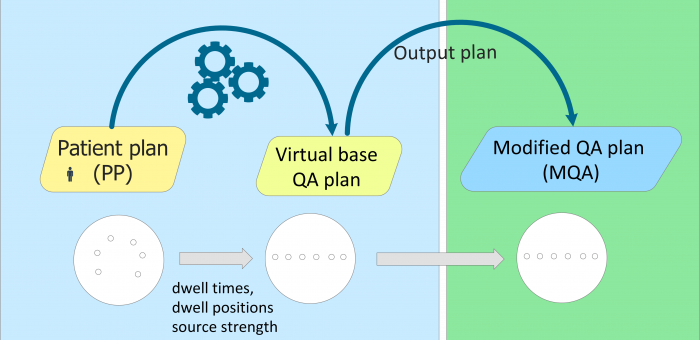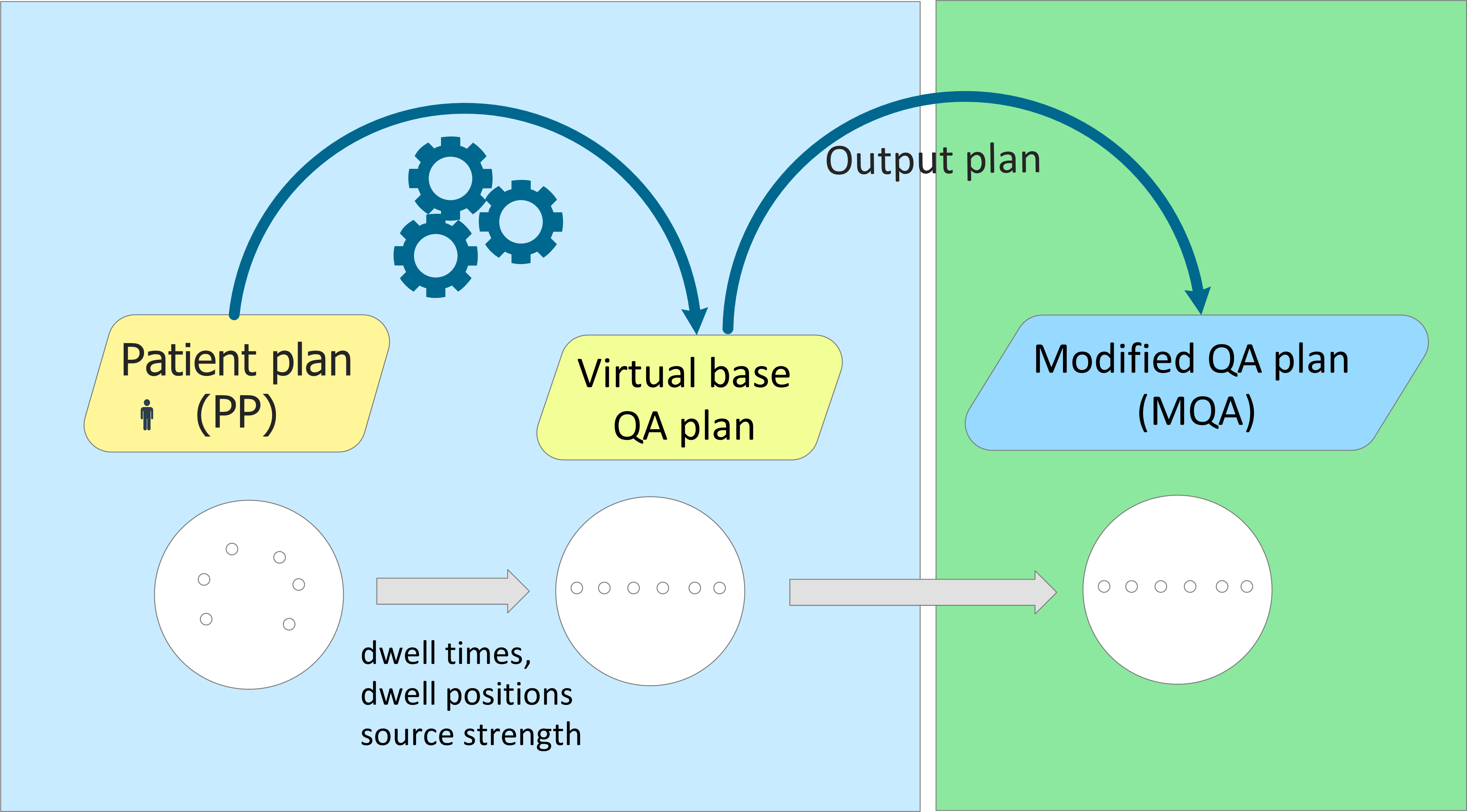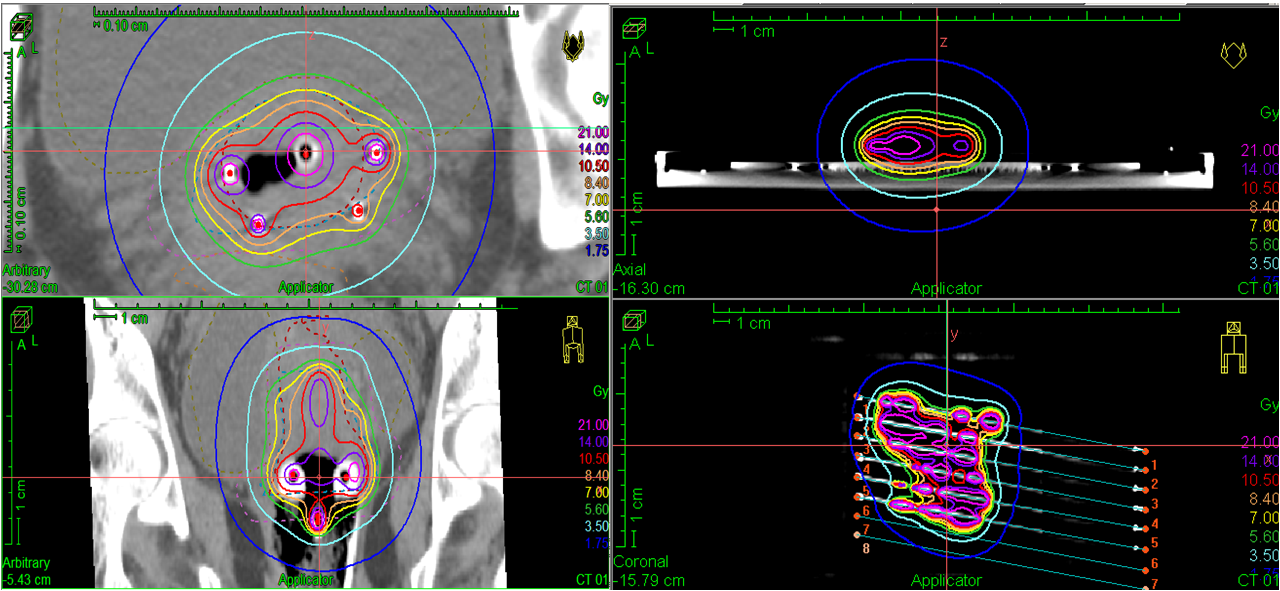Dr. Ilias Sachpazidis
Medical software engineering

Catheter overloading for patient specific QA in brachytherapy
Patient specific QA is the gold standard for external beam radiotherapy (IMRT/VMAT). Brachytherapy treatment planning (BTP) has become more complex due to advanced imaging (MR, PET, US), advanced dose calculation algorithms and new applicators.
Patient plans (PP) were automatically transferred (dwell times, source dwell positions and associated source strength) with a virtual base QA plan comprising eight catheters (2.5mm step size) using in-house (C# .NET) software. The modified QA (MQA) plan was imported into Oncentra Brachy (v4.3 Elekta AB, Sweden), the dose re-calculated and the MQA exported to an 192Ir afterloader (v2 Elekta AB, Sweden).
The resulting dose distribution was measured using the SRS1000 array (PTW-Freiburg), 4F steel needles and a PMMA jig comprising eight milled channels to hold the 4F needles 1.7mm above the array. The PMMA jig has a nominal mechanical positioning uncertainty of 0.2mm. Measured and calculated dose distributions were compared using Verisoft (v7.0, PTW-Freiburg).
Negligible differences were determined between the PP and corresponding MQA dwell times (< 0.5%). Comparison of measured and calculated dose distributions showed excellent agreement (gamma local 1.5%, 1.5mm).
Hitherto such measurements required manual input of source strength and dwell times and positions into QA plans. The in-house software enables routine verification of brachytherapy patient plans analogue to IMRT/VMAT QA. Moreover the system clock and source strength recalculation are implicitly verified. Commercially available software and hardware was employed enabling ide-
spread adoption. The associated workflow overhead is moderate. This technique will be further developed as part of a more general QA concept for brachytherapy.


